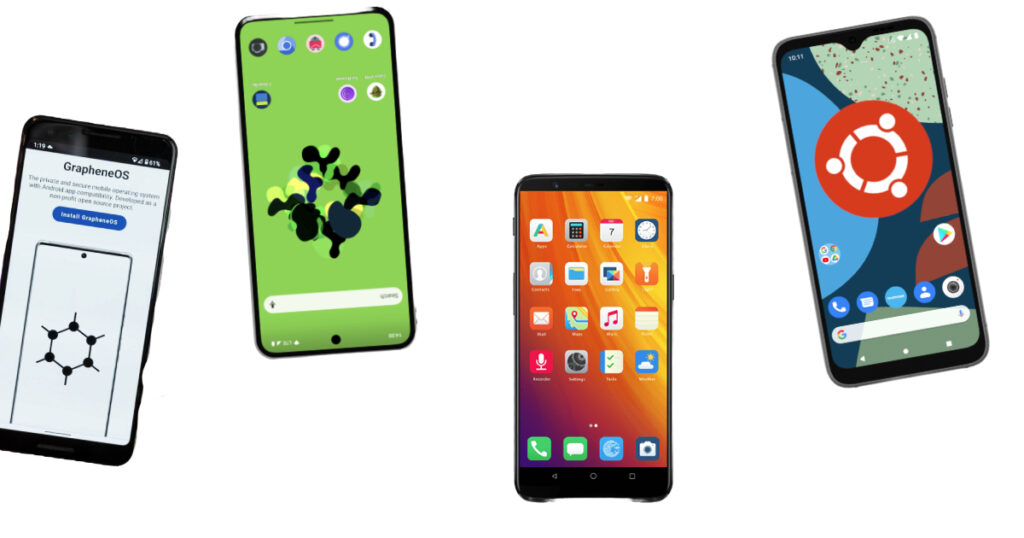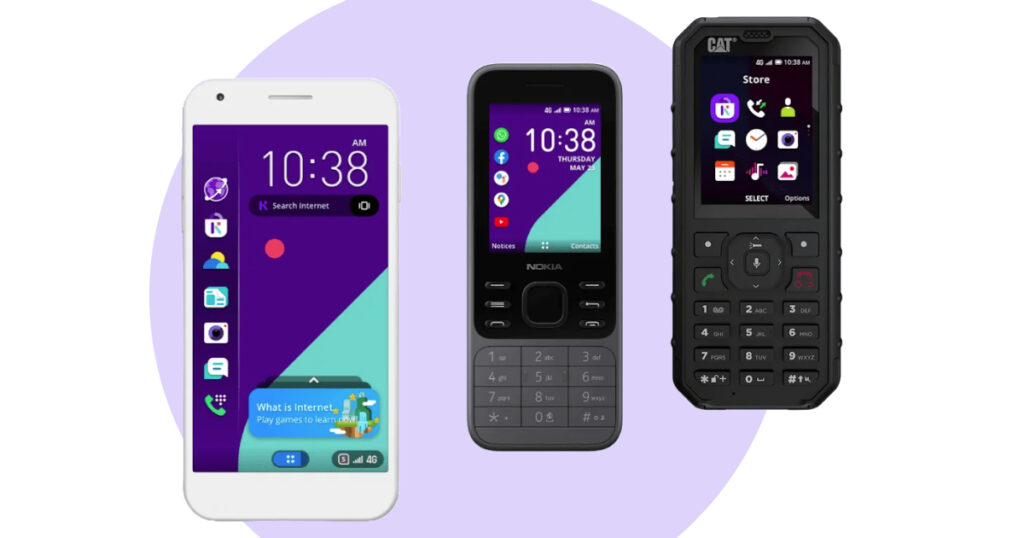For over a decade, the mobile operating system landscape has been dominated by two giants: Apple’s iOS and Google’s Android. Together, they power the vast majority of smartphones worldwide, creating a duopoly that shapes our digital lives. While both platforms offer robust features and extensive app ecosystems, some users seek alternatives for various reasons, including privacy concerns, a desire for more customization, or simply a yearning for something different. In this blog post, we’ll delve into the viable alternatives to iOS and Android available in 2025, examining their strengths, weaknesses, and target audiences.
Understanding the Dominant Players: iOS and Android
Before we explore the alternatives, it’s crucial to understand what makes iOS and Android so dominant.
iOS:
- Strengths: Known for its user-friendly interface, seamless integration within the Apple ecosystem (iPhones, iPads, Macs, Apple Watch), strong security features, and consistent performance. Apple maintains tight control over both hardware and software, allowing for optimized performance and timely updates. The App Store boasts a vast library of high-quality applications.
- Weaknesses: Limited customization options compared to Android, a closed ecosystem that can be less flexible, and a generally higher price point for devices.
Android:
- Strengths: Offers a high degree of customization, a wide range of hardware options at various price points, and an open ecosystem that allows for sideloading apps and deeper system modifications. The Google Play Store provides access to a massive selection of apps.
- Weaknesses: Fragmentation across different manufacturers and devices can lead to inconsistent update schedules and varying user experiences. While security has improved, it has historically been perceived as less robust than iOS. Some manufacturer customizations (skins and bloatware) can detract from the user experience.
Related: How to Reset an Android Phone
The Quest for Alternatives: Why Look Beyond?
Despite their strengths, the iOS and Android duopoly doesn’t cater to everyone. Here are some common reasons why users seek alternatives:
- Privacy Concerns: Both Google and Apple collect user data, albeit with different approaches and levels of transparency. Some users prefer operating systems with a stronger focus on privacy and data minimization.
- Desire for Customization: Android offers more customization than iOS, but certain users desire even greater control over their device’s look, feel, and functionality.
- Open Source Philosophy: Many users are drawn to open-source software for its transparency, community-driven development, and freedom from corporate control.
- “De-Googled” Experience: Some users wish to avoid reliance on Google’s services and seek operating systems that offer alternatives.
- Reviving Older Hardware: Certain alternative OS projects aim to extend the lifespan of older devices that are no longer supported by their original manufacturers.
- Unique Features and Philosophies: Some alternative operating systems offer distinct features or a different approach to mobile computing.
The Landscape of iOS and Android Alternatives in 2025
The mobile OS landscape beyond iOS and Android is diverse and constantly evolving. Here are some of the most notable alternatives available in 2025:
Privacy and Security Focused:

- GrapheneOS: A privacy and security-focused, open-source Android-based OS. It is designed for Google Pixel devices and emphasizes hardened security features, advanced sandboxing, and the removal of unnecessary background services and Google apps (though Google Play Services can be installed in a sandboxed environment).
- CalyxOS: Another open-source, privacy-centric Android fork. It comes with pre-installed privacy-focused apps like Signal and Tor Browser and allows limited access to Google services through MicroG, offering a balance between privacy and usability. CalyxOS supports select Pixel and other Android devices.
- /e/OS (formerly eelo): A “de-Googled” Android distribution focused on user privacy. It replaces core Google apps with open-source alternatives and provides its own app store and cloud services, aiming for a familiar Android experience without Google’s tracking.
- Ubuntu Touch: Developed by the UBports community, Ubuntu Touch is a Linux-based mobile operating system with a strong emphasis on privacy and open-source principles. It aims for convergence, allowing the phone to function as a desktop when connected to an external monitor.
Open Source and Community-Driven:
- LineageOS: One of the most popular and long-standing open-source Android ROMs. It offers a clean, customizable, and bloat-free Android experience for a wide variety of devices, extending the life of many older phones.
- postmarketOS: An experimental, touch-optimized Linux distribution aiming for a 10-year lifecycle for smartphones. It’s based on Alpine Linux and is still in early development, primarily targeting developers and enthusiasts.
- Plasma Mobile: An open-source mobile operating system based on KDE’s Plasma desktop environment. It aims to bring a Linux desktop experience to mobile devices and supports devices like the PinePhone and Librem 5.
- Mobian: A Debian-based operating system for mobile devices, focusing on free software principles and user control. It currently supports a limited number of devices, including the PinePhone.
Lightweight and Feature Phone Focused:

- KaiOS: A lightweight mobile operating system designed for feature phones. It bridges the gap between basic phones and smartphones, offering essential smartphone functionalities like LTE connectivity, app support (including WhatsApp, YouTube, and Google Assistant), and long battery life on low-power hardware.
Proprietary Alternatives:
- HarmonyOS (by Huawei): Developed by Huawei as an alternative to Android following US sanctions. It’s designed for a broad ecosystem of devices, including smartphones, tablets, and IoT devices. While based on Android’s open-source project, it has its own distinct architecture and app ecosystem.
- Tizen OS (by Samsung): A Linux-based open-source mobile operating system primarily used in Samsung’s smartwatches and smart TVs. While Samsung has experimented with Tizen on phones in the past, its presence in the smartphone market is currently minimal.
Emerging and Niche Options:
- Sailfish OS (by Jolla): A Linux-based mobile operating system with a unique gesture-based user interface and a focus on privacy. It offers some compatibility with Android apps through an emulator.
- PureOS (by Purism): A fully free and open-source Linux distribution with a strong focus on security and privacy, also powering Purism’s Librem 5 smartphone.
Choosing the Right Alternative
Selecting an alternative to iOS or Android depends heavily on individual needs and priorities.
- For Privacy Enthusiasts: GrapheneOS, CalyxOS, /e/OS, and Ubuntu Touch offer strong privacy and security features.
- For Customization and Open Source Advocates: LineageOS, postmarketOS, Plasma Mobile, and Mobian provide greater control and transparency.
- For Users Seeking a Lightweight Experience on Feature Phones: KaiOS is a viable option.
- For Those Invested in the Huawei Ecosystem: HarmonyOS offers integration within their range of devices.
- For Linux Power Users: Ubuntu Touch, postmarketOS, and Plasma Mobile might appeal to those familiar with the Linux environment.
The Future of Mobile Operating Systems
While iOS and Android are likely to remain dominant in the near future, the alternatives are becoming increasingly capable and catering to specific niches. The growing awareness of privacy concerns and the desire for more user control may fuel further interest in these alternative operating systems. Additionally, advancements in hardware and software could pave the way for new and innovative mobile platforms to emerge.
Conclusion
The world beyond iOS and Android is rich with diverse mobile operating systems, each offering a unique set of features, philosophies, and trade-offs. Whether you prioritize privacy, customization, open-source principles, or simply seek a different mobile experience, the alternatives available in 2025 provide compelling options to explore. As the mobile landscape continues to evolve, these alternatives play a crucial role in fostering competition, innovation, and user choice in the way we connect with the digital world. And finally, if you want to switch things up and try a different software or a mobile brand altogether, Gadget Salvation is a buyback platform where you can sell your smartphone and use that extra cash to purchase something different and exciting.
Olena is an operations manager at Gadget Salvation, wearing many hats and navigating the intersections of efficiency and innovation. With a deep passion for tech and sustainability, they thrive on exploring solutions that drive progress while protecting our planet.